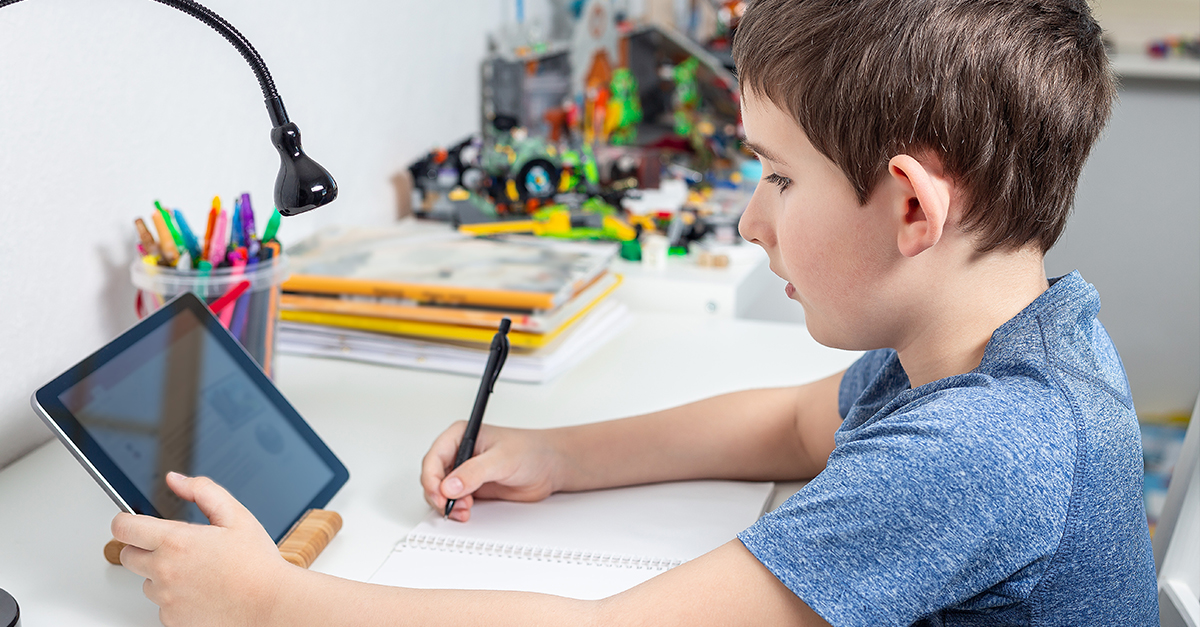
“Help! There are so many educational apps, but how do I pick the best one?”
If this question has crossed your mind, you’re not alone. Many parents and educators are searching for educational apps that provide the best digital learning environment. Generally, this means apps that deliver meaningful content with an experience that includes discovery and challenge.
Evaluating educational apps to find the best choices for your kid can seem daunting with the abundance of options available. So we’ve broken the process into two easy questions: What type of app do you want? And what features suit your needs?
8 Types of Educational Apps
We’ve outlined eight categories to help you understand the different educational apps and the learning experiences they provide. Many apps fall under several categories, including multiple features that add interest and increase engagement.
1. Playful Learning
Silly activities that involve open-ended pretend play that may mimic real-life, such as playing dress-up or pretend cooking.
2. Ebooks
Stories with the added features of read-aloud mode or meaningful interactivity to enhance comprehension.
3. Workbook- or Worksheet-Based
Digital worksheets, usually involving multiple choice questions, that are great for replacing paper and pencil when practicing fluency, recall, and preparing for a test.
4. Classic Activities
Well-loved activities such as puzzles, coloring pages, and traditional games in a new format that supports cognitive development while also allowing for multiplayer mode to enhance social interaction.
5. Theme Experiences
Activities and video content that promotes deep exploration of specific, high-interest topics.
6. Interactive Encyclopedias
Multimedia encyclopedia content that can be used for supplemental learning material and research.
7. Build Your Own Content (BYOC)
Open-format apps that allow users to explore freely and create their own activities.
8. Video Curation
Collection of videos that have been chosen to suit a specific age group or topic, like television channels in a mobile format that viewers can easily control.
Read: 5 Internet Safety Tips for Parents of Young Children

9 Features to Look for When Evaluating Educational Apps
When evaluating educational apps for your children, use this list of features to help guide you. You’ll give them a successful learning experience and yourself peace of mind.
1. Correct Ability Levels
Kids tend to lose interest when they go through levels that are too easy to get to the one that’s right for them. Therefore, parents and teachers to be able to set the app according to the child’s needs quickly and easily.
One way to do this is to look for an initial placement assessment that goes beyond asking the student’s age or grade. Listing the skills practiced in the game also helps parents and teachers determine if it will be engaging for the child.
2. Enabled Speech for Non-Readers
If you’re looking for an app for children who don’t read yet, make sure the app features narration. Directions or introductions should be read aloud, preferably with the text highlighted as the narration occurs.
Apps for older students should have the option for them to tap to hear the text read aloud to create a balance between encouraging independent reading and providing support. English language learners and children on a lower reading level significantly benefit from speech support.
3. Meaningful Engagement
Unless you’re specifically looking for a workbook- or worksheet-based app for skills practice, remember that learning is more than recalling information. Apps that include activities that promote depth of understanding, creativity, critical thinking, real-world applications, or problem-solving provide a more exciting experience and more profound learning opportunities.
4. Appealing Audio
This may seem trivial compared to others on this list, but it’s worth mentioning! The app’s music should be tolerable, if not enjoyable. Kids may not balk at repetitive electronic background music, but they don’t always enjoy it—and you likely don’t, either. On the other hand, quiet, melodic music produces pleasant and calm energy for you and your child to enjoy as they learn.
Some apps have customizable audio options that allow you to selectively mute, like turning off background music but allowing narration or sound effects.
5. Parental Controls
Good educational apps minimize visual distractions such as ads, pop-ups, and external links. However, the best apps provide the option to turn off in-app purchases or hide them behind an adult-only access question. This allows the learning space to remain uncluttered and minimizes the risk of children accidentally making purchases or clicking on third-party links.
Read: Digital Citizenship Guide for Parents
6. Instructor-Friendly Features
Tracking children’s progress, setting time limits, or creating goals for each student helps make the learning experience more meaningful. Also, look for tips on extending the learning progress away from the app or other bonus material for added value.
7. Accurate Representation of the App’s Purpose
Be cautious when reading the developer’s claims about its app and read through the reviews for unbiased opinions. Your experience with the app should be true to the skills and experience the creator promotes. For instance, just because there’s a small problem-solving game doesn’t mean the app emphasizes and builds problem-solving skills.
8. Easy Navigation
Kids can get frustrated or lose focus when the navigation is not intuitive. Buttons should be well-defined for non-readers to navigate independently, and getting the desired result should involve as few steps as possible. Any interactive elements should be relevant to the content and not destructive.
9. Thoughtful Feedback to Support All Learning
Apps should use incorrect answers as part of the learning process. If the app only provides positive feedback for the correct answers, kids are not able to practice learning from their mistakes. Plus, this teaches them that mistakes are great learning experiences and not to be feared.
A variety of app options means you’ll be able to find solutions that suit your child best. As developers come up with new software frequently, we hope you can use these guidelines as a reference when evaluating educational apps for your family.




Leave a Reply